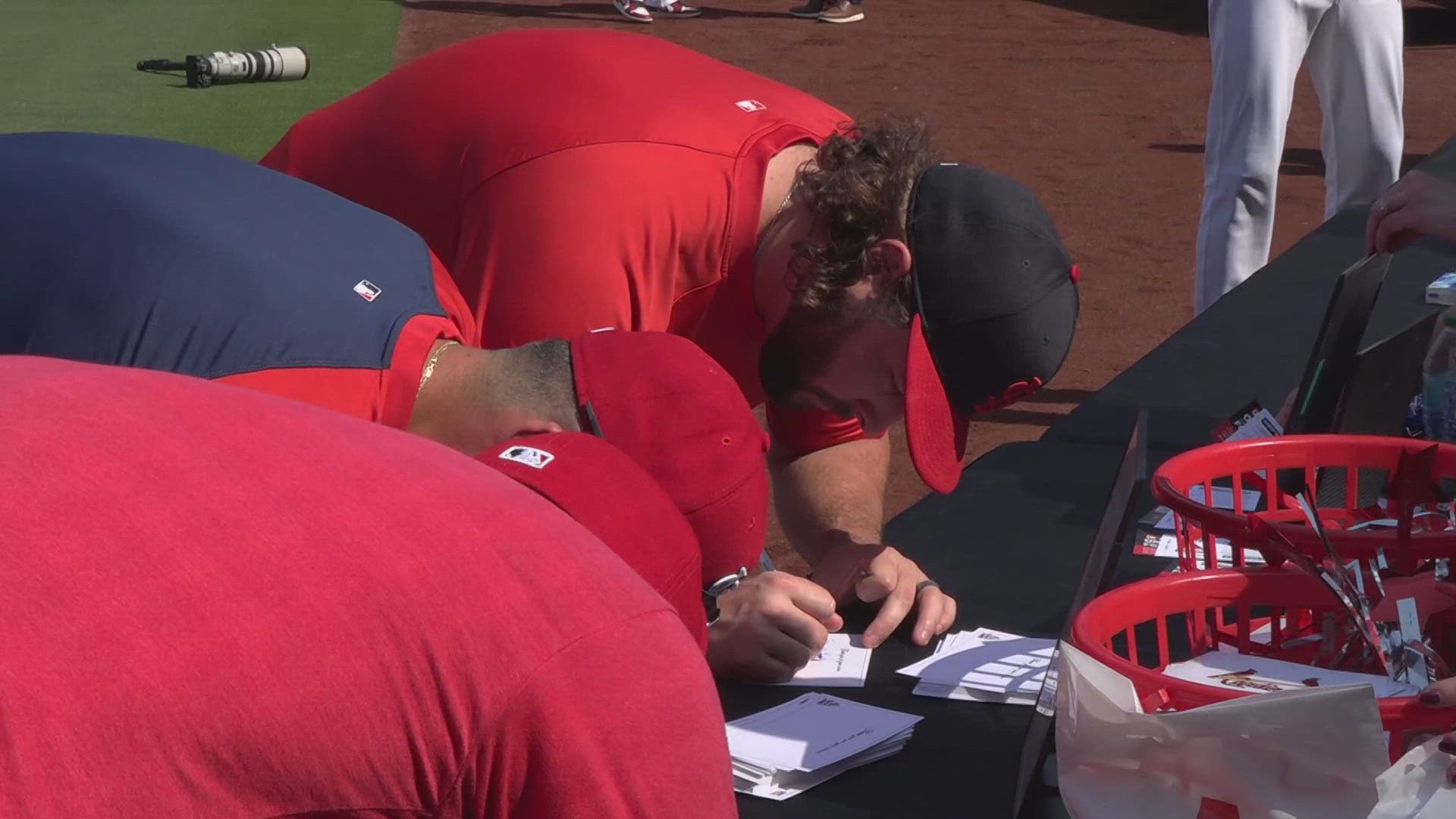ST. LOUIS — Former United States President Jimmy Carter entered hospice care in Plains, Georgia, on Feb. 18, according to The Carter Center, a non-profit organization in Atlanta. The news came years after his cancer diagnosis at age 98.
Carter chose to spend the rest of his remaining time at home with his family and receive hospice care rather than receiving more medical care to stunt his illness, according to the center.
Carter's background
Born in Plains, Georgia, on Oct. 1, 1924, the Carter we know today was actually named James Earl Carter Jr.
Carter’s father, James Earl Carter Sr. was a farmer and businessman, and his mother, Lillian, was a registered nurse.
He went to the U.S. Naval Academy at Annapolis, married Rosalynn, and had four kids, according to History.com. Carter originally wanted to venture the seas as an engineering officer on a submarine when his father died.
Carter ended up going back home and started managing his family peanut warehouse business whilst in the meantime being an avid churchgoer, according to History.com. Because of his active involvement at Plains Baptist Church, he gained recognition and support from his congregation and community.
This helped him launch an official political career as a local board of education member, according to History.com. He went on to become a Democratic state senator. He also served as Georgia governor.
Then he aimed for the U.S. presidency in 1974, according to History.com. At the time, there were a slew of White House controversies, including the Watergate scandal, which granted Carter the opportunity to gain American support by campaigning as “an outsider” to Washington politics.
Facing off against Republican incumbent Gerald R. Ford, Carter ran with Senator Walter Mondale to bring home the victory and become the nation’s 39th president, according to History.com.
According to the White House, Carter had several accomplishments involving environmentalism, human rights, and economic initiatives both foreign and domestic. His administration also fought inflation and a short recession during his tenure between 1977-1981.
How his policies affected STL
Energy policy
Carter made a visit on Aug. 24, 1979, aboard the Delta Queen. He greeted hundreds of fellow Americans in St. Louis right on the Mississippi River. He and Rosalynn even went jogging on the riverbank during their stay, according to The Daily Diary of President Jimmy Carter.
According to the remarks he provided upon his arrival to the city, he said his administration witnessed “The tremendous advantages that [St. Louis possesses with] a good transportation system with the river, and I believe in the future we can, with a good energy policy, have a much better transportation system, no matter what kind of river we want to use for goods or for people.”
Carter’s energy policy originated from the Emergency Natural Gas Act and his creation of the Department of Energy, which funds research on new sources of energy, especially those that do not harm the environment, according to the Miller Center of Public Affairs, which specializes in U.S. presidential political history and more.
He used the nation’s oil dependence on foreign entities to push his energy policy on conserving and producing energy.
While speaking to St. Louisans during his visit he said, “It doesn’t make it good for us or more enjoyable for us when we waste what God has given us. So, I ask all of you to help us conserve energy.”
Youth Employment and Demonstration Projects Act
According to the Department of Labor, the Youth Employment and Demonstration Projects Act went into law in 1977. There were four aspects to the law including youth employment and training programs that are grounded in the community.
Missouri communities are enabled by this opportunity because its youth learn important skills in the workforce, according to the Missouri DOL and Industrial Relations.
The National Neighborhood Policy Act
The National Commission on Neighborhoods was created from The National Neighborhood Policy Act, which was comprised of 20 members. Their members are from diverse backgrounds, races and ethnicities.
There are five task forces meant to investigate economic development, social services, and possible hindrances to community improvement, according to The Jimmy Carter Presidential Library and Museum. The commission held hearings in Baltimore, Cleveland, St. Louis, Chicago, Los Angeles and Seattle.
Other visits to the City of St. Louis
Carter flew from Maryland to Lambert International Airport in St. Louis, according to a diary entry in 1978. Then, he went to the St. Louis Convention Center for the annual convention of the National League of Cities.
Carter went from East St. Louis to Lambert airport to Springfield, Missouri, to participate in the Carter-Mondale campaign rally, according to a diary entry in 1980.
To watch 5 On Your Side broadcasts or reports 24/7, 5 On Your Side is always streaming on 5+. Download for free on Roku or Amazon Fire TV.
5 On Your Side news app
iPhone | Google Play



